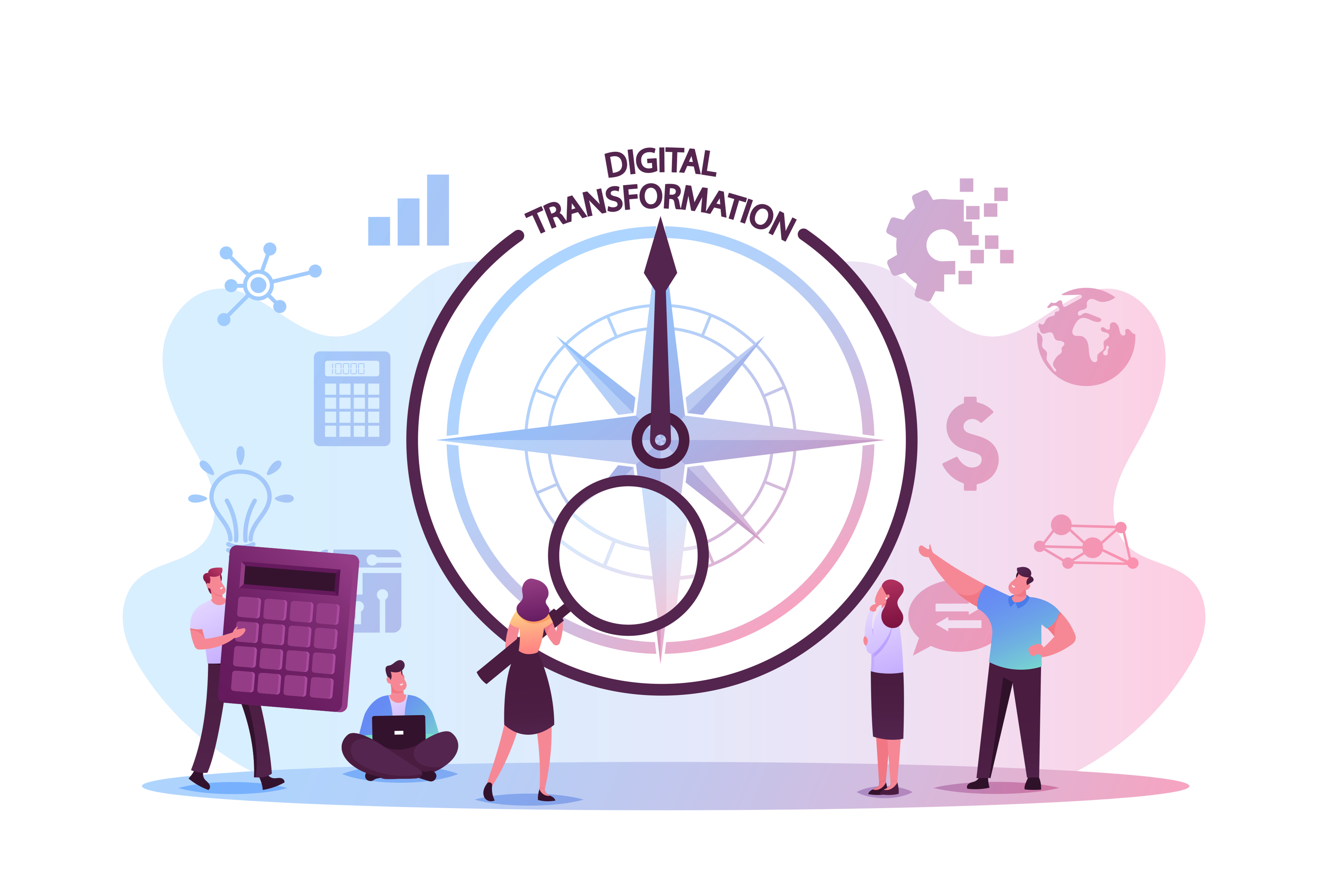The key pillars of a digital transformation strategy
Strategy is the key to effective transformation, and now’s the perfect time to rethink or refine it

Digital transformation seems to have become the buzzword on every C-Suite exec and IT leader's lips. According to Gartner, 69% of boards of directors accelerated digital business initiatives in 2020 in the wake of COVID-19 disruption, while almost half anticipate changing their organisation's business model. Last year IDC predicted that, by 2022, 70% of all organisations will have increased their use of digital technologies to drive customer engagement, employee productivity and resilience.
Yet there's just one problem with this trend: many transformation initiatives either stall, disappoint or fail completely. In 2016 McKinsey estimated that 70% of complex, large-scale transformation projects failed to reach their stated goals. Two years later it revised this estimate to say that only 16% of digital transformations resulted in successfully improved performance. Will last year's COVID-19-driven transformations be able to sustain a significant impact?
The trick, many argue, is strategy. Where last year's initiatives were often somewhat ad-hoc, aimed at maintaining the organisation and its workers through a crisis, organisations now have an opportunity to refine, rethink or revise their plans and align them with their long-term goals. A 2019 article in the Harvard Business Review argues that transformations often fail because organisations see them as being about technology. 'Most digital technologies provide possibilities for efficiency gains and customer intimacy' the authors argue, 'but if people lack the right mindset to change and the current organisational practices are flawed, digital transformation will simply magnify those flaws.'
So, what helps ensure a successful and lasting transformation, and how can you support and tune your organisation's initiatives to ensure they meet their goals? The answer comes down to having a strategy based around six pillars, with the first being the most important of them all.
Pillar One: People
Digital transformation relies on technology, but people are crucial to success. For a start, the goal is often to develop a greater understanding of the customer in order to provide the products and services they want and need. That means seeing the organisation from the outside in, to recognise where there's friction or an obstacle, and where there are opportunities for improvement.
It also means empowering employees, particularly in an unsettled period where companies and workers are still navigating through a seismic shift in ways of working. Recent research by O2 Business points to a new, dynamic workforce, made up of seven different personas, two demonstrating a preference to work from the office, two working from the home, and three working across the office and the home, and potentially elsewhere as well. These personas have different working styles and different needs, but they all need rock-solid connectivity, appropriate devices and secure access to the tools, systems and resources they need to do their jobs.
Any workforce transformation strategy needs to embrace flexible and remote working at a cultural level, while delivering effective tools for remote communication and collaboration. It needs to consider Device as a Service solutions and converged mobile/wi-fi/WAN connectivity plans that ensure those outside the office get the same grade of experience as those inside.
The People pillar is also important because transformation requires talent and leadership. With the right team of technology, data and process experts, it becomes much easier to push transformation through, and the same goes for having leadership to help drive through the necessary change. Organisations don't have to go through this alone. Service and solutions providers, like O2 Business, can bring in the tools, services, guidance and expertise that organisations need to make their transformation a success.
Pillar Two: Data
If people are the key to successful transformation, then data is the driving force. It powers new analytics, AI and machine learning applications, releases insights and enables more informed decisions. It plays a vital role in improving customer engagement, service and support. It can help public sector organisations understand how public resources are being used and make crucial decisions that inform future policies and planning. For example, anonymised and aggregated data was used for an O2 Motion project to support greater London Authority to better understand high-street usage and the impact of social distancing during COVID-19 lockdowns.
Data is so important that organisations need to ensure it is at the core of their transformation strategy. Organisations need to know what data they have, how it's used, where it's stored and how to access it and combine different data sources. They need to know how to clean and prepare it, and how to ensure that it's secured and in line with internal standards and external regulations on privacy and compliance. Unstructured data, external data, customer data and social data all needs to be brought together, and often this requires a change in process to ensure that it's being gathered and used consistently. Which brings us neatly to our next pillar.
Pillar Three: Processes
Data-driven insights on their own can be transformative, but to really create impact these need to become a part of supporting everyday organisational processes, so that acting on trends and business intelligence becomes second nature to every worker, at every level. What's more, replacing old, non-digital processes with digital processes wherever possible enables things to be done faster and more cost effectively, often with lower levels of human intervention, removing bias from the analysis and making it even more insightful. Crucially, it does so in a way that creates new data streams to mine for insight.
From virtual ordering and queuing systems to virtual communications and collaboration tools, electronic project management, document management and approval systems, digital processes can remove friction from both the customer and employee experience and allow higher levels of automation, all of which make it easier to focus on the customer and their needs. They also feed into security and compliance, and make it easier to manage and collaborate remotely, as organisations adapt to their new dynamic workforce.
Pillar Four: Optimisation
New digital, data-driven processes also help organisations to optimise and streamline. We should look at transformation as an opportunity to shift away from old systems and legacy IT and towards a more flexible, scaleable, agile and cost-efficient IT architecture. It's also a chance to pivot away from expensive, hard to maintain software and hardware to modern cloud-based infrastructure and Software-as-a-Service solutions which may be better matched to achieving new business goals.
Moving to a new IT approach isn't always easy, but it can result in cost-savings for the organisation while actively supporting new flexible, dynamic styles of working. The same goes for redefining the office as a workspace, providing space and resources for those that need them while reducing office overheads, including rent and energy. Moving to new network infrastructures, combining different wi-fi, WAN and fixed-line connectivity or embracing SD-WAN technologies can also promote agility and resilience and make it easier for organisations to scale, and providers like O2 Business can help on both counts. IoT devices and data also have a role to play, helping organisations optimise everything from their vehicle fleets to their use of workspaces and energy consumption. Again, O2 Business has expertise and solutions in this area.
Pillar Five: Innovation
The right mix of people, processes, data and optimisation opens up the way for innovation, enabling new products, new services and even new disruptive business models. AI and ML technologies can help improve the employee experience, speeding up onerous or challenging tasks, but they could also enhance the customer experience through personalised recommendations, accurate predictions or time-saving triage of support and service calls. The key thing isn't just to embrace a technology or solution for its own sake, but for how it can help you meet and accelerate your organisation's goals. What's more, innovation only begins to happen when you encourage risk-taking, bringing the best and brightest from your different teams together to collaborate and co-create.
Pillar Six: Feedback
Our final pillar is feedback and reporting. After all, how can you monitor the effects and impact of your initiatives if you can't measure them? How can you promote customer and employee engagement without having the right metrics and information within reach? Successful transformation always involves a degree of cultural change, and that means listening and having the right metrics and KPIs in place. This includes refining learning and development initiatives to get the most out of your technologies, as well as looking at more people orientated KPIs ensuring people have the tools they need to do their job. Feedback is the key to continual improvement and evolution.
Find out how O2 Business can help you on your digital transformation journey
Sign up today and you will receive a free copy of our Future Focus 2025 report - the leading guidance on AI, cybersecurity and other IT challenges as per 700+ senior executives
ITPro is a global business technology website providing the latest news, analysis, and business insight for IT decision-makers. Whether it's cyber security, cloud computing, IT infrastructure, or business strategy, we aim to equip leaders with the data they need to make informed IT investments.
For regular updates delivered to your inbox and social feeds, be sure to sign up to our daily newsletter and follow on us LinkedIn and Twitter.
-
 Trump's AI executive order could leave US in a 'regulatory vacuum'
Trump's AI executive order could leave US in a 'regulatory vacuum'News Citing a "patchwork of 50 different regulatory regimes" and "ideological bias", President Trump wants rules to be set at a federal level
-
 TPUs: Google's home advantage
TPUs: Google's home advantageITPro Podcast How does TPU v7 stack up against Nvidia's latest chips – and can Google scale AI using only its own supply?

